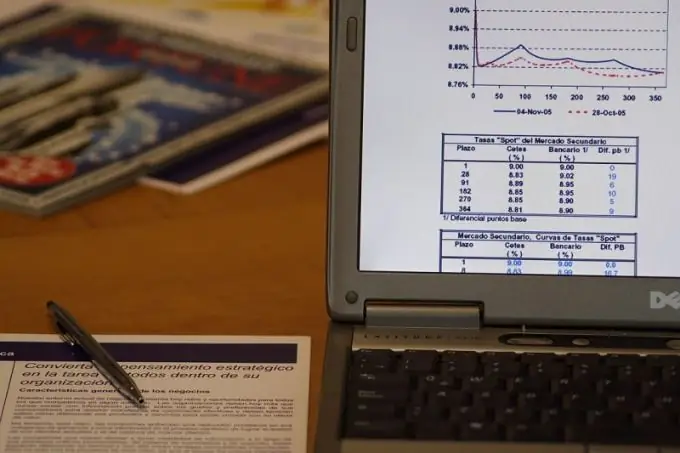Most modern spreadsheet applications allow you to specify row and column names. MS Excel does not have such an opportunity: data signatures have to be entered directly into the table. But this has its own advantage. This program makes it possible to leave visible labels to variation series when scrolling the table by any number of cells vertically and horizontally.

Instructions
Step 1
Thus, captions and titles can be left visible, and the data can be shifted and scrolled both up and to the left. This makes sense when the table is large and you are entering or viewing data at the ends of rows or columns. In order not to get confused and not to enter information in an inappropriate cell, it is convenient for the signatures to be in plain sight all the time.
Step 2
In other spreadsheets and databases, either row names (for horizontal scrolling) or column names (for vertical scrolling) will remain visible. These are, for example, MS Access, Statistica for Windows and others. In Excel, you can duplicate the same window on one sheet, and the data labels will be located on top of the table itself, and manipulations with them can be carried out independently of each other.
Step 3
To do this, first of all write the headings in the columns and the captions to the rows. It doesn't matter if you use cell merging, how many levels the headings and subheadings will have: in any case, you can divide the sheet into fixed and scrollable areas exactly according to your needs.
Step 4
After signing the headings and names of the lines, in the main menu of the program, select the "Window" section and find the "Split" item in it. By default, the visible sheet window will be divided into four equal sectors by freely movable lines. In this case, the top and left parts of the page, separated by the area separator lines, will be duplicated over the original table by as many rows and columns as there are rows and columns to the left and above the separators.
Step 5
There is absolutely no need for such doubling. Therefore, if you need to leave only the line names visible, double-click the left mouse button on the horizontal dividing line. It will disappear, as will the doubling of the column names. Then move the cursor over the vertical line, and its pointer will change its appearance. While holding down the left mouse button, drag the separator line to the right border of the row names.
Step 6
To remove unnecessary doubling of row names, go to the Window menu and select the Freeze Regions item in it. The doubling of names will disappear again, and the vertical line will change from 3D to 2D and will be rigidly fixed. Now, when scrolling horizontally in the table, the line labels will always be visible no matter how many printed pages of data you scroll through.
Step 7
In the same way, you can separate the column headings, or both at the same time. However, it will not be possible to remove or move the dividing lines in this mode. If you made a mistake, and you need to move one or both of the dividing lines, in the "Window" menu, select "Unlock Areas". The dividers will revert to three-dimensional appearance, and you can drag them to the desired place on the page with the mouse. Then re-pin the areas. When the need to separate the regions is no longer necessary, in the "Window" menu, select "Uncoupled". However, this is not at all necessary, since these lines will not appear on the print.






